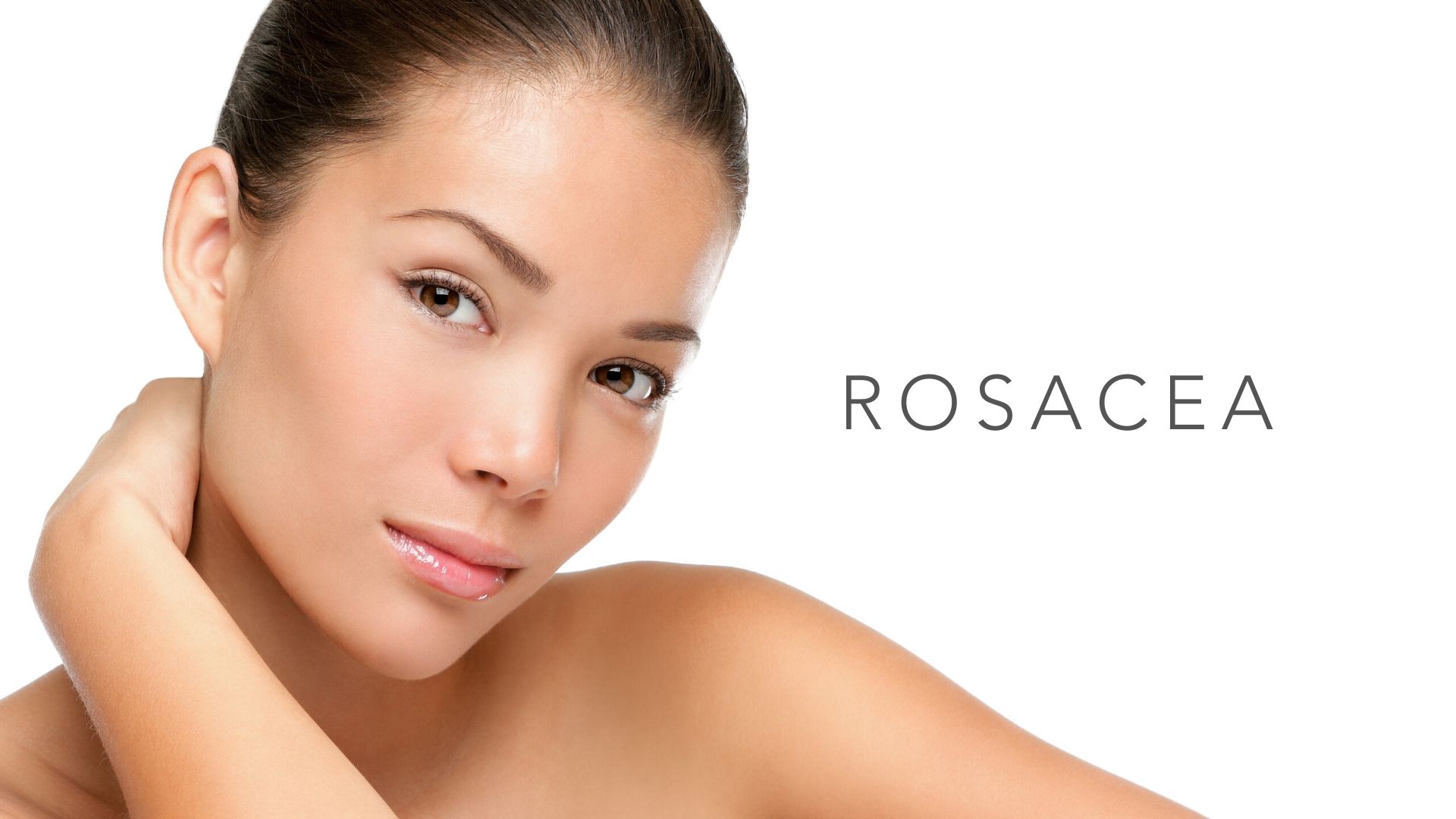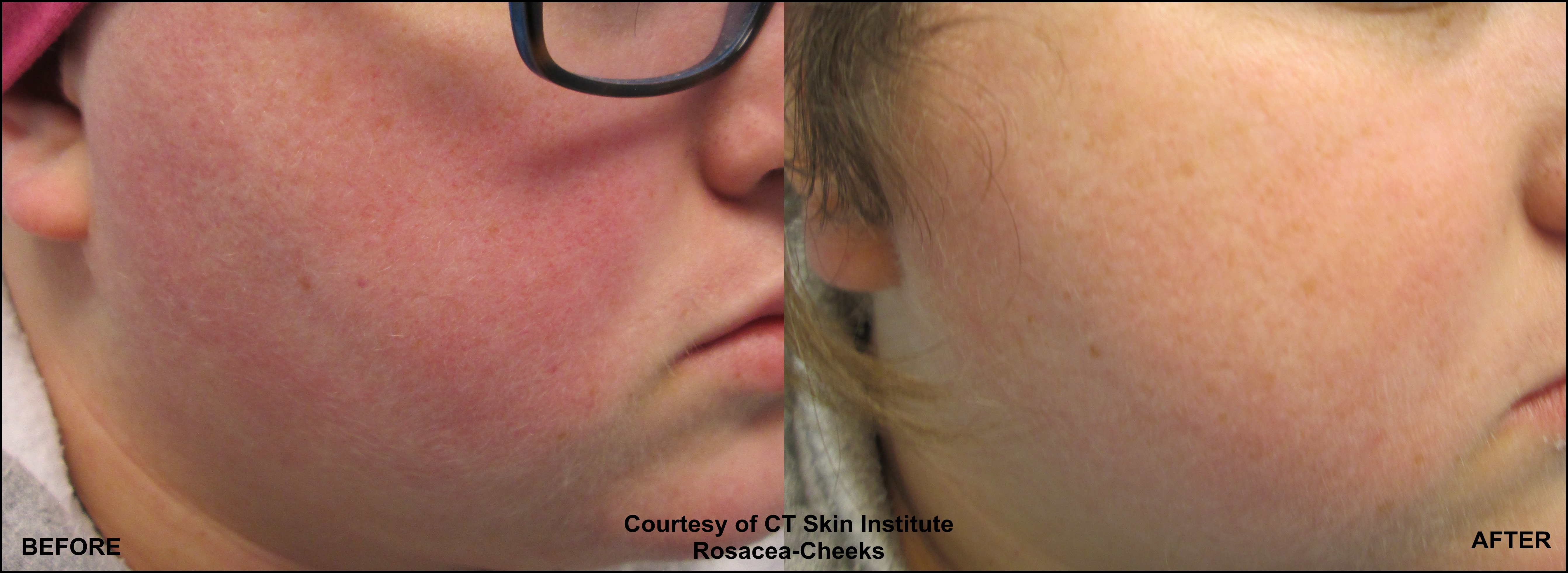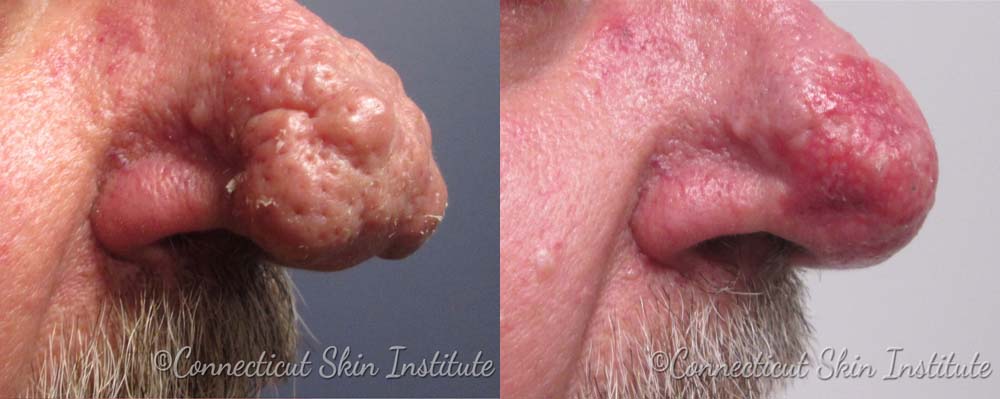
Rosacea Treatments from the Connecticut Skin Institute
Rosacea treatments from the Connecticut Skin Institute can reduce the redness and inflammation associated with this common skin condition. Learn more about the causes of rosacea, the different types of this skin disorder, and the available treatments, including medication and light therapies using laser.
Why Choose the Connecticut Skin Institute?
Discerning patients know the best results come from experienced professionals, trained in the most modern techniques and equipped with the most advanced technologies. That is why individuals looking for the best rosacea treatments in the Stamford or Milford, CT area choose the Connecticut Skin Institute. In additional to professionals with unparalleled experience in cosmetic laser treatments, The Connecticut Skin Institute is one of the few skin and laser spas in the world, outfitted with the latest versions of the 595 nm Pulsed Dye laser (Vbeam Prima)and the KTP (Excel V+) laser. Having both gold-standard lasers for rosacea allows The Connecticut Skin Institute to provide you with the most customized and effective laser treatment options.
Get started with Rosacea treatment from the Connecticut Skin Institute today and restore your skin so it looks clear, smooth, and healthy. Contact the Connecticut Skin Institute online or call (203) 428-4440 to schedule a consultation.
What is rosacea?
Rosacea is a common, chronic skin condition. Typically, it begins with a tendency to blush or flush more easily than other people. It is common to have broken blood vessels (telangiectasias) on your nose, cheeks, forehead, and chin. You may also experience small red bumps or pustules due to the inflammatory nature of rosacea.
What are the different types or categories of rosacea?
There are four main subtypes of the disease: erythematotelangiectatic, papulopustular, phymatous, and ocular rosacea.
- Erythematotelangiectatic rosacea – This is the most common subtype of rosacea. It presents with persistent redness of the central portion of the face with intermittent flushing. Broken blood vessels can also be noticed. A stinging or burning sensation on the skin can also be felt.
- Papulopustular rosacea – This subtype of rosacea causes acne-like bumps along with redness and swelling of the central face.
- Phymatous rosacea – This subtype of rosacea causes thickening of the skin. It results in an enlarged, cobblestoned appearance of the nose (rhinophyma).
- Ocular rosacea – This subtype of rosacea affects the area around the eyes. It results in dry, irritated, itchy eyes.
What causes rosacea?
The cause of rosacea is poorly understood. However, there are certain triggers that aggravate rosacea. It is advisable to avoid hot beverages, spicy foods, alcohol, and exposure to extreme temperatures – sun, cold or wind. Appropriate use of broad-spectrum sunscreens and sun avoidance are also very important to prevent flare-ups.
How can rosacea be treated?
Fortunately, rosacea is a treatable skin condition. Topical and oral medications are effective in the treatment of the small red bumps of rosacea, but they are not effective for the redness/flushing and broken blood vessels associated with the condition.
The Pulsed Dye Laser or PDL and the KTP lasers are the gold standard for treating facial redness and superficial blood vessels. These lasers specifically targets hemoglobin, the major component of red blood cells. Thermal energy from the laser causes the blood vessel to collapse and fade naturally with time.
Benefits of Rosacea Treatment with the Pulsed Dye and KTP Lasers
- Reduces facial redness and the appearance of blood vessels
- Reduces rosacea symptoms that do not respond to medication
- Treatments are fast, well-tolerated & require no downtime*
- No anesthesia required
- Treatments performed by leading dermatologist
Learn more about treatments with the Pulsed Dye Laser and KTP laser>>
Before and After Rosacea Treatment*


These before and after images are actual patients of the Connecticut Skin Institute. Their stellar outcomes demonstrate how effectively laser treatments clear up the symptoms of rosacea to leave the skin looking clear, smooth, and healthy. As with any cosmetic treatment, results may vary.*
What is Rhinophyma?
Rhinophyma is a severe subtype of rosacea that affects the nose. The main symptom of Rhinophyma is redness and a change in the shape of the nose. Left untreated, rhinophyma can cause the tip of the nose to become a deep red color and misshapen or bulbous looking. Other rhinophyma symptoms include lumps that develop on the nose, purplish discoloration, skin thickening, pitting or scarring, and enlarged pores. Rhinophyma typically occurs in people who already suffer from severe rosacea that plagues other areas of the face and/or body. The changes can be so drastic, they affect the individual’s ability to breathe.
What Causes Rhinophyma?
Like rosacea, the exact cause of Rhinophyma is unknown. However, risk factors include:
- A family history of rosacea
- Being 50 + years old
- Being Male
- Having fair skin
Rhinophyma Treatment
Like other subtypes of rosacea, rhinophyma is treatable. However, it is important to treat rhinophyma as early as possible to secure the best results and avoid disfiguration. Like other forms of rosacea, rhinophyma can be treated with medications, as well as light-based therapies, such as the pulsed dye laser. Severe rhinophyma requires treatment with CO2 laser resurfacing.
Before and After Rhinophyma Treatment*



These pictures of before and after treatment with the CO2 laser demonstrate the impressive improvement that is possible from advanced laser therapies from the Connecticut Skin Institute. As with any cosmetic procedure, results may vary.* However, the people depicted in these before and after images are actual patients and demonstrate the expert technique of the dermatologists at the Connecticut Skin Institute.
Rosacea Treatment Results
While one laser treatment produces some improvement, four to six treatments may be needed to achieve the best results. Treatments are usually performed four weeks apart. Rosacea treatments are well tolerated with very mild discomfort and require no anesthesia. Although you may see some temporary redness and swelling post-laser treatment, there is typically no associated downtime.
Rosacea Treatments Near Me
At the Connecticut Skin Institute, we specialize in treating skin disorders such as rosacea. Our state-of-the-art facility and our highly experienced dermatologists ensure patients receive the most advanced technology and techniques in the field of skincare. Do not let rosacea keep you from loving the skin you are in. Find out what the Connecticut Skin Institute can do for you by scheduling a consultation. Contact the Connecticut Skin Institute online or call (203) 428-4440 today.
Request a Consultation
Call (203) 428-4440 or fill out the form below.
by submitting this form you agree to be contacted via phone/text/email.
